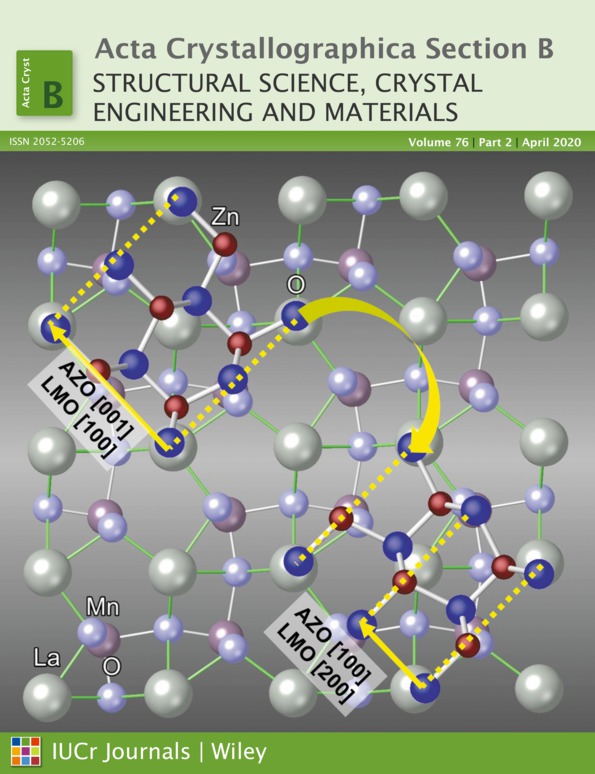Crystal structure, vibrational frequencies and polarizability distribution in hydrogen-bonded salts of pyromellitic acid
Abstract
Structural features of moderate-to-strong O—H…O hydrogen bonds are related to the frequencies of O—H stretching vibrations and to the electric polarizability distribution in the donor and acceptor functional groups for crystals synthesized from the 1,2,4,5-benzenetetracarboxylic (pyromellitic) acid, namely: bis(3-aminopyridinium) dihydrogen pyromellitate tetrahydrate, (1); bis(3-carboxypyridinium) dihydrogen pyromellitate, (2); bis(3-carboxyphenylammonium) dihydrogen pyromellitate dihydrate, (3); and bis(4-carboxyphenylammonium) dihydrogen pyromellitate, (4). A combination of single-crystal X-ray diffraction, powder Raman spectroscopy and first-principle calculations in both crystalline and gaseous phases has shown that changes in the O—H…O hydrogen-bond geometry can be followed by changes in the corresponding spectral modes. Vibrational properties of moderate hydrogen bonds can be estimated from correlations based on statistical analysis of several compounds [Novak (1974). Struct. Bond.18, 177–216]. However, frequencies related to very short O—H…O bonds can only be predicted by relationships built from a subset of structurally similar systems. Moreover, the way in which hydrogen bonds affect the polarizability of donor and acceptor groups depends on their strength. Moderate interactions enhance the polarizability and make it more anisotropic. Shorter hydrogen bonds may decrease the polarizability of a group as a consequence of the volume restraint implied by the neighbour molecule within a hydrogen-bonded aggregate. This is significant for evaluation of the electric susceptibility in crystals and, therefore, for estimation of refractive indices and birefringence.




